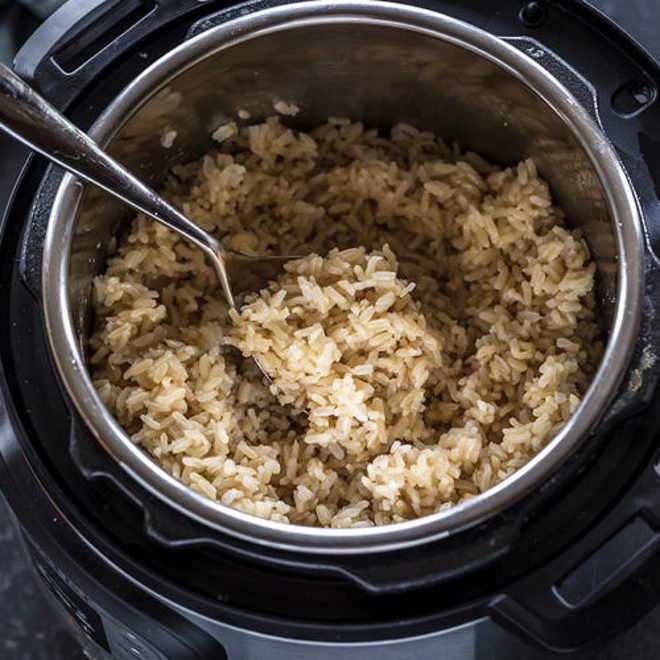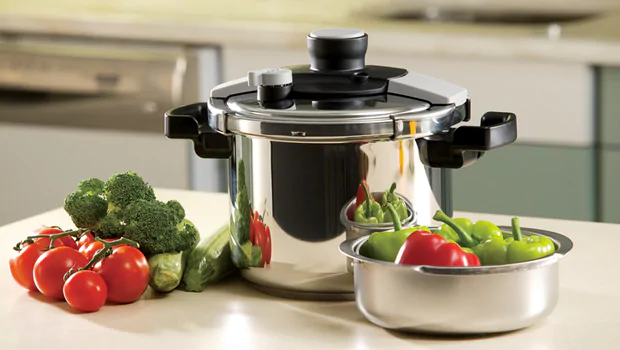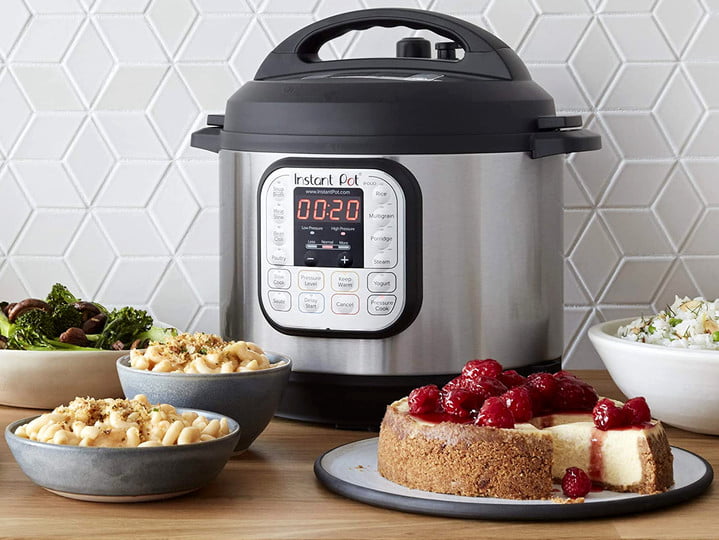Is it Possible to Cook Dry Food in a Pressure Cooker?

The Instant Pot has transformed the world of pressure cookers and how we cook every week. Many people have asked if a pressure cooker can be used to prepare dry food.
I decided to look into it, and here’s what I found:
Cakes, cookies, brownies, and other baked goods may be made in a pressure cooker. Some baked items will need to be placed in a container and covered with foil in the pressure cooker. However, for non-baked objects, some liquid is required since the liquid is required to make steam, which causes the pressure effect.
But there’s much more to know about pressure cookers, including what to cook in them and what not to. So let us continue!
Pressure cookers are helpful kitchen tools that have gained popularity in recent years. You hopped on the bandwagon knowing this.
What exactly do you cook in it?

Pressure cookers are multifunctional and safe appliances. I discuss safety in more detail in this previous blog, but we’ll go over everything you can cook with your new pressure cooker in this article.
In most cases, pressure cookers prepare difficult portions of meat, soups, and stews. However, you may cook a variety of other meals in your pressure cooker, even dry foods!
You can use your pressure cooker to create bread, cake, and even cookies!
Can a pressure cooker be used to cook dry foods like bread or pancakes?
You can, but only with specific equipment.
Typically, bread must be baked in a coffee can or other similar container. You may use any heatproof jar with a wide opening.
It should not be airtight but should be wrapped with foil.
Airtight containers might retain pressure long after the pressure in the pressure cooker has been released. There is still pressure in an airtight container, and there is no safe method to discharge the steam.
The foil will enable steam to escape while preventing pressure buildup. This means you’ll have to wait until it cools sufficiently to open it, which may result in mushy bread.
Nobody enjoys stale bread.
Pancakes, on the other hand, should usually be cooked on the burner.
I did locate several pressure cooker pancake recipes, but they don’t turn out like the pancakes you’re probably used to. They are heavier and more “cakey” than regular pancakes, and they require longer to cook.
Making pancakes in your pressure cooker has the advantage of requiring considerably less hands-on time. So, while you’re preparing breakfast, you may take a shower, get dressed, and drink your coffee.
What foods can you cook in a pressure cooker?

However, most individuals choose to make cuisine that would otherwise take a long time to prepare. For instance, consider the following:
- Dried legumes
- Lentils
- Tough beef cuts
- Chicken
Even baking may be done in a pressure cooker!
The options are virtually limitless. Pot roast, brown rice, ribs, and even chicken wings may be prepared. Search for recipes on the internet. You’re guaranteed to uncover a plethora of recipes!
What can’t you make with a pressure cooker?
One of the drawbacks of using a pressure cooker is that you cannot cook anything in it.
Using a pressure cooker to cook oatmeal or pasta will result in overdone and mushy food.
An electric pressure cooker should not be used for canning.
Canning must be done at a specific temperature. Because electric pressure cookers do not enable you to adjust the temperature, you cannot verify that harmful bacteria are removed.
Ingredients that splutter during cooking should also be avoided since they might jam the release valve.
I’m not saying you can’t cook with them; I’m only cautioning you not to overfill your pot when utilizing them.
Foods that stumble a lot when cooked include:
- Cranberries
- Peas, Split
- Applesauce
- Rhubarb
- Barley with Pearls
Is it possible to bake in a pressure cooker?

You certainly can!
You may bake a variety of foods in your pressure cooker. Cakes, brownies, and even cookies may be baked in a pressure cooker.
All you need to bake a cake is a pressure cooker-compatible pan, which can be glass, metal, or silicone.
Follow your favorite recipe as you would normally. Then, pour a cup of water into the pressure cooker’s bottom and place the pan on top of the trivet. If your pressure cooker does not come with one, place a ball of aluminum foil in the bottom.
Many electric pressure cookers even include a “cake” mode, allowing you to set it and forget it! If yours lacks a cake option, use the manual setting and adjust the timing appropriately.
Brownies may also be made in a pressure cooker.
When baking brownies, though, the dough must be somewhat thicker than usual. The thick batter keeps the brownies from becoming soggy. Some recipes additionally instruct you to cover your brownies with a plate or foil to prevent condensation from leaking on them.
Surprisingly, there are a plethora of cookie recipes available online! You can create one giant cookie or numerous mini ones.
One of the best things about baking in a pressure cooker is that it shuts off automatically.
So if you prepare a cake, brownies, or cookies and then forget about them, they will not burn! The steam will keep everything moist while preventing overcooking.
Is it necessary for pressure cookers to have liquid to cook?
Yes!
Pressure cookers function by increasing the pressure of the steam.
Using a pressure cooker requires the use of water or another liquid. The liquid is required to generate steam and build up pressure to cook the meal effectively. It’s also what allows food to cook faster while remaining tender.
When cooking, a good rule of thumb is to use at least one cup of water. Of course, if you’re following a recipe, you should use the exact amount of liquid specified.
What happens if you don’t fill your pressure cooker with water?
For one thing, it won’t generate any steam, and there will be no pressure if there is no steam.
While we’re talking about pressure and steam, never try to open your pressure cooker while it’s on. Most current electric pressure cookers have built-in safety measures that prevent you from accidentally opening them. Even so, you should not even attempt it.
When the meal is done cooking, properly release the pressure by utilizing the vent as directed by the device.











